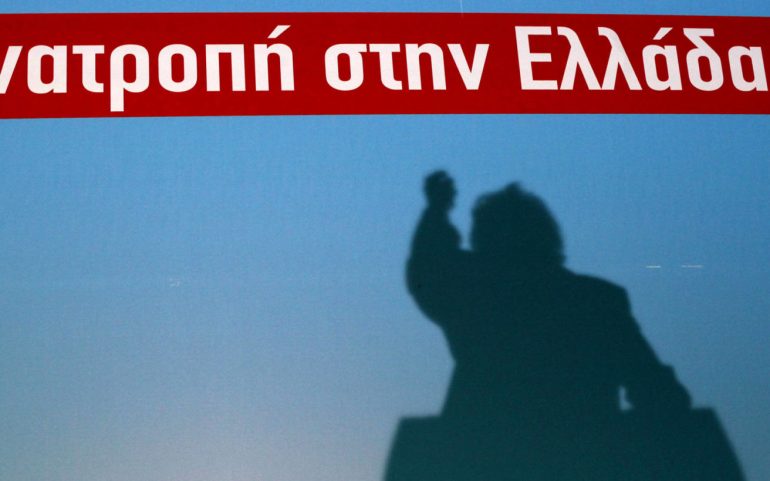It was May 2012 when its founding act was submitted to the Supreme Court SYRIZA, a statement that transformed this loose coalition of parties into a single political body.
It would now be known as the "SYRIZA United Social Front", maintaining the same emblem, but not its organizational structure. The party is governed and represented by a 19-member committee, with Alexis Tsipras as chairman of both the party and the steering committee.
"The Coalition of the Radical Left (SYRIZA) is a single, massive, democratic, multi-party party of the modern Left," the party's statute reads, as it emerged through successive cycles of composition, division and consensus.
And this is exactly the peculiarity of SYRIZA, that it is a party of components, tendencies and alliances, the big key to watch both the difficulties that had to be overcome for its birth and how it managed to become the "first time Left" government of the place.
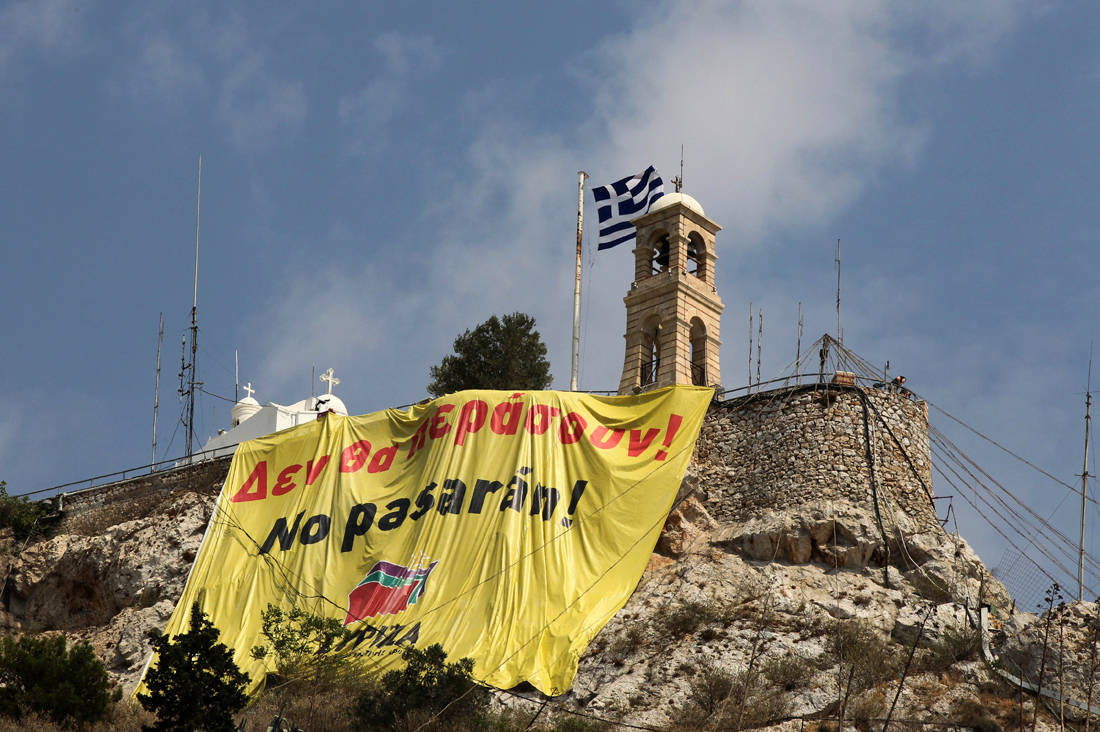
The ferment for the creation of a multi-party party, its political survival and its transformation into a single body remain unprecedented for the political chronicles of Greece. The initial components of the party, that is, so many voices of the Left, that is, had to find that common ground that would represent the rhetoric and ideology of all.
And the voices were many and loud, from Trotskyists and historical figures of the Left to those who disagreed with KKE, Maoists, old acquaintances of the KKE Interior, ecologists, Eurosceptics, Eurocommunists and countless more.
Manolis Glezos said it from the first moment, representing the founding component Active Citizens: "Let each one keep his independence and autonomy, but let us have unity in action. Without exclusions and hegemony ".
The Coalition of the Radical Left was born in 2004 as a political alliance of leftist groups and organizations. An enlargement of the Coalition of the Left, Movements and Ecology (single party since 1991), the largest component of the new multi-party party, which disbanded in 2013 to give birth to the common front of the Left called SYRIZA.
This is the story of…
Osmosis and initial components
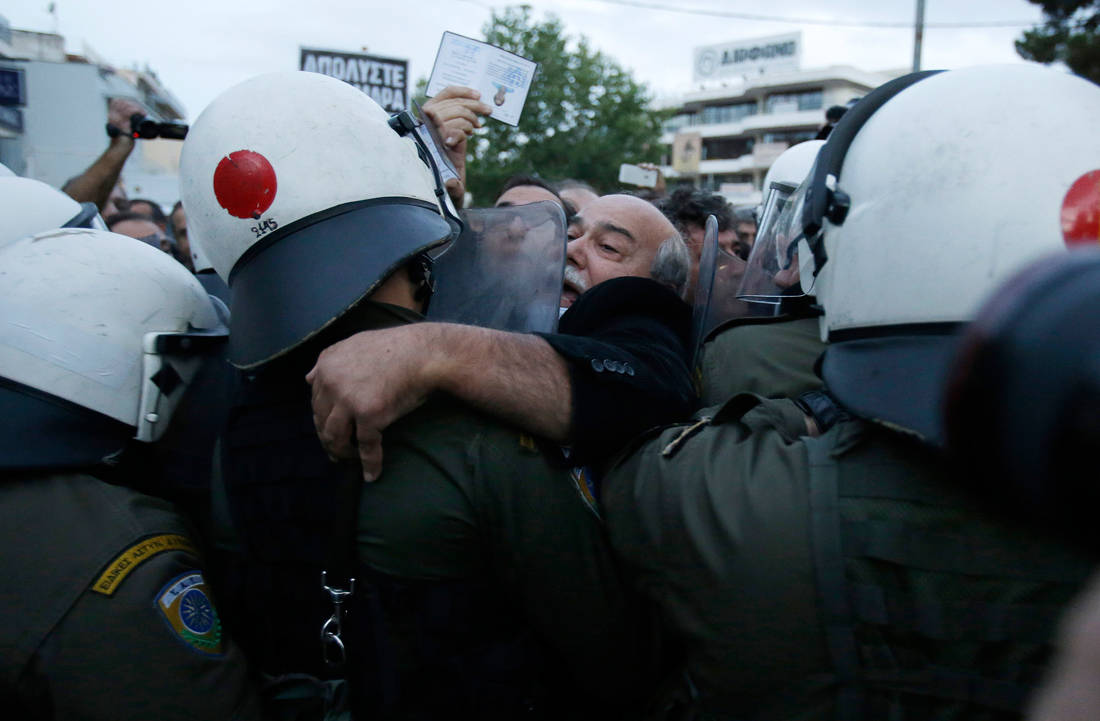
The ferment that led to the formation of the left-wing multi-ethnic alliance is traced back to 2001, with the creation of the Dialogue for Unity and Joint Action of the Left, in which a number of actors participate. Despite their sometimes essential ideological differences and alien origins, the left unions press on common perceptions on a number of key issues of Greek society, after all, the aspirations of the Left.
The Dialogue Area does not represent a political organization, but there are a number of commonly accepted candidates who are running in the October 2002 local elections and are bearing fruit. With him first and foremost Manolis Glezos in the Athens-Piraeus Super Prefecture.
As a permanent forum for dialogue and consensus, the Space finally brings to the end of 2003-beginning of 2004 a series of bodies that will form SYRIZA and will be called "components" of the new body. Approaching the 2004 parliamentary elections, the members of the Space sought the possibility of participating in a single ballot, which resulted in the initiative Initiative for the Coalition of the Left and the joint ballot that finally wrote "Coalition of the Radical Left" for the first time.
Until 2013, when most self-dissolved or absorbed to give birth to the united SYRIZA, these were the famous components that formed the backbone of left-wing panspermia.
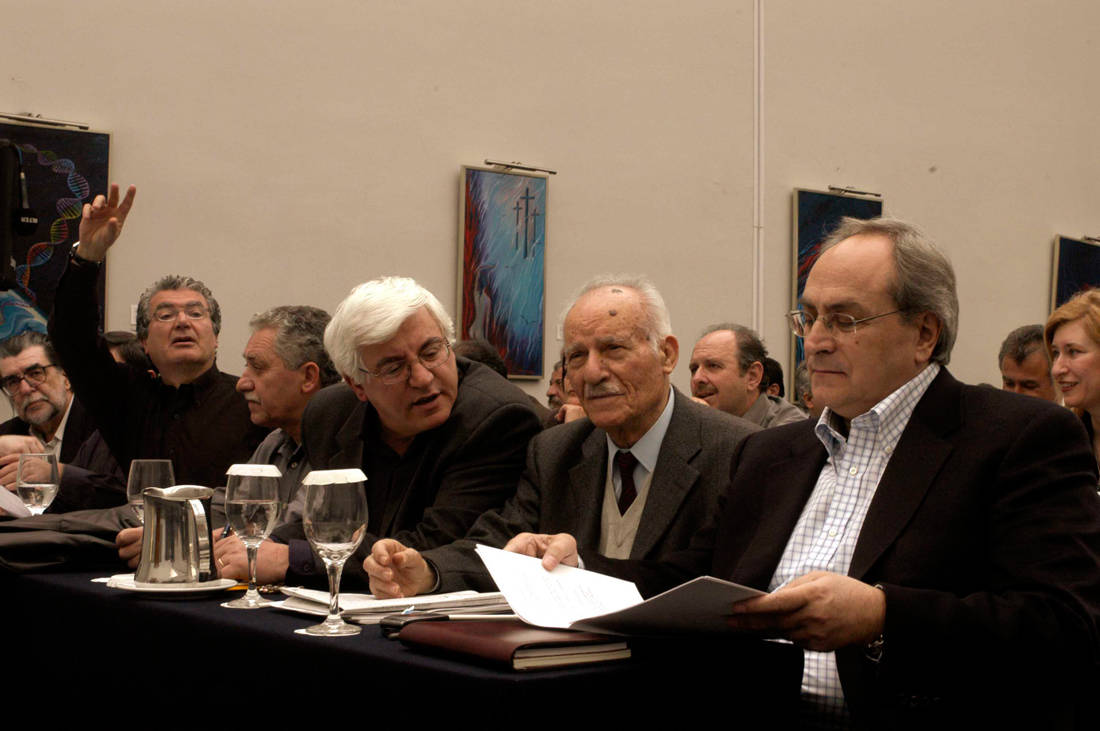
His Coalition Nikos Konstantopoulos, the main body of the new scheme that pioneered the creation of the pluralistic body. SYN was founded in 1989 as a broader electoral coalition of the KKE, the Greek Left of Leonidas Kyrkos (EAR, the so-called Eurocommunists) and other center-left parties. After the KKE left the left-wing alliance in the early 1990s, the Coalition was formed as an independent party.
The Renewal Communist Ecological Left (AKOA) of Giannis Banias, the old KKE Interior - Renewal Left, which continued the Euro-communist tradition after the break-up of the KKE Interior in 1986. The K.K.E. Εσ.-Α.Α. continued an autonomous course, split further at some point and as AKOA joined SYRIZA just in time for the 2004 elections.
The Movement for the Unity of Action of the Left (KEDA), a body that emerged in 2000 from a group of KKE executives who disagreed and split. The body of Giannis Theonas and Mitsos Costopoulos published his own newspaper, "Enotita".
The active International Workers' Left (CMP) of "revolutionary Marxism" and the anti-racist movement. The CMP, founded in 2001, pioneered the establishment of the Hellenic Social Forum in 2002 and was one of the driving forces behind the founding of SYRIZA, the Sunday School for Immigrants and the Expel the Racism (KAR) Movement.
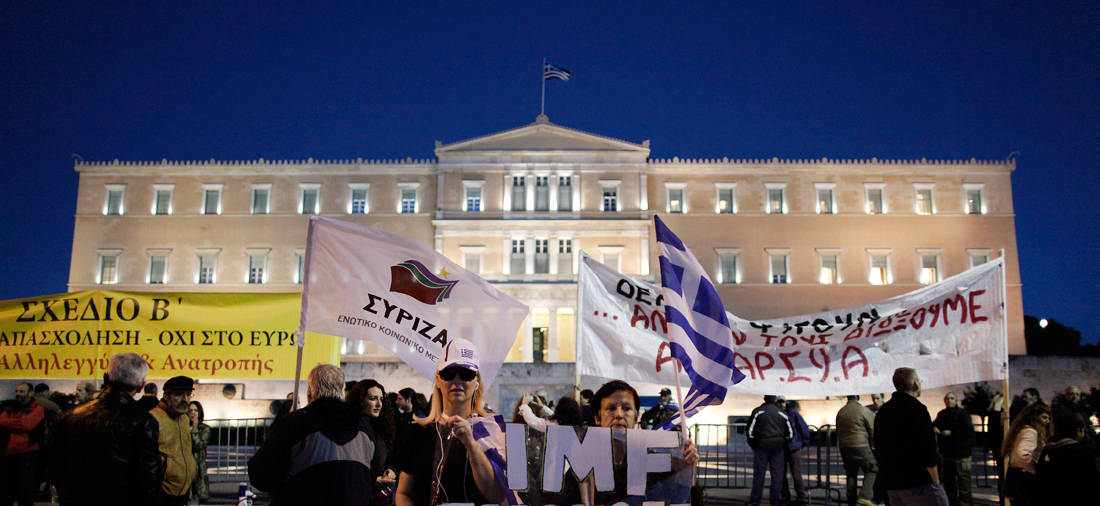
The Active Citizens of the hero of the national Resistance, Manolis Glezos. The political formation was founded in 2002 by the historical member of the Left to participate in the local elections of the year and was an active member of the Dialogue Area. Glezos disagreed with SYRIZA at the founding conference of 2013 with the voluntary self-dissolution of the components and the Active Citizens were not dissolved.
His Left Current (AP) Panagiotis Lafazanis, a party founded in 2017 springing from the ferment of the so-called "Left Platform", a radical trend that developed within SYRIZA with dissidents in the decisions of the Central Committee (such as the International Labor Left).
The Marxist-Leninist Communist Organization of Greece (KOE), which did not participate in the party's ballots in 2004, merely declaring its support for the multi-party SYRIZA. In which he officially joined in 2007.
Xekinima, another Greek Trotskyist ideology organization founded in 1975 by members of former resistance organizations that operated during the Colonels' junta. Initially a member of PASOK, part of it became independent in 1992 and founded the International Socialist Organization, which joined SYRIZA in 2008.
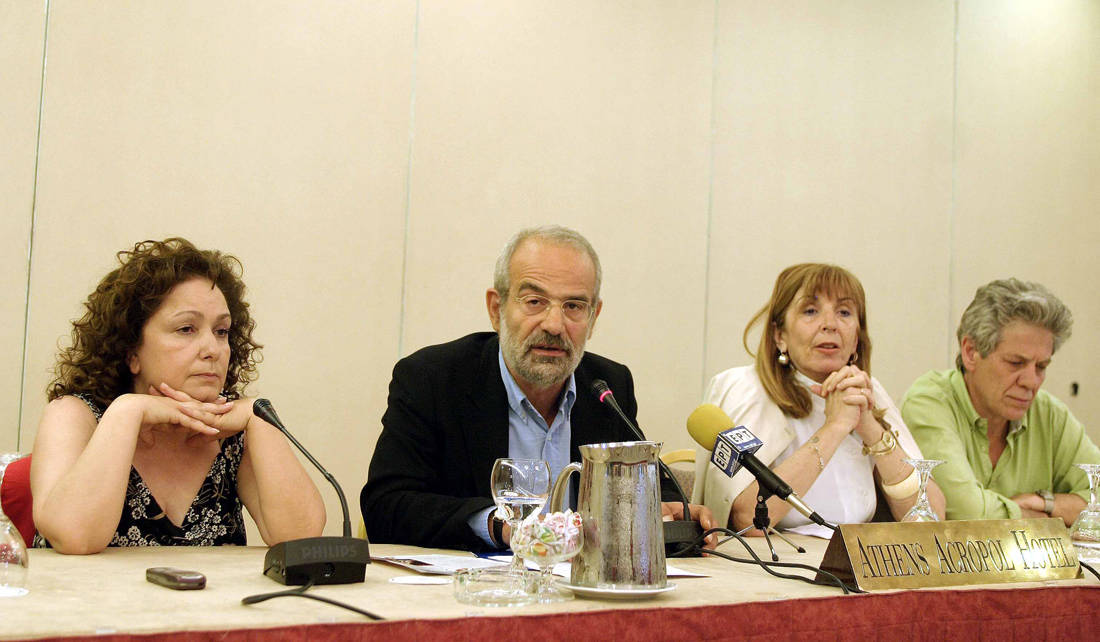
The Ecosocialists of Greece, a group that emerged in 2007 from the Association of Ecosocialists of Greece after the departure of the Ecological Intervention. He has been an official member of SYRIZA since 2008.
Kokkino, an organization that sprang from the CMP in 2004 and formed the so-called "second wave" within SYRIZA in 2008 with the Ecosocialists and Xekinima.
Several even smaller and regional organizations have completed the galaxy of SYRIZA's original components, such as the radical left-wing organization Rosa, a group that came from the Social and Political Rights Network and refers to Rosa Luxemburg, but also the , a Trotskyist organization made up of members active in the wider trade union space.
An important addition in 2007 was the Democratic Social Movement (DIKKI), the party founded in 1995 by Dimitris Tsovolas and joined SYRIZA after the former Minister of Finance first left. The formation evolved into DIKKI - Socialist Left and thus found its home in SYRIZA.
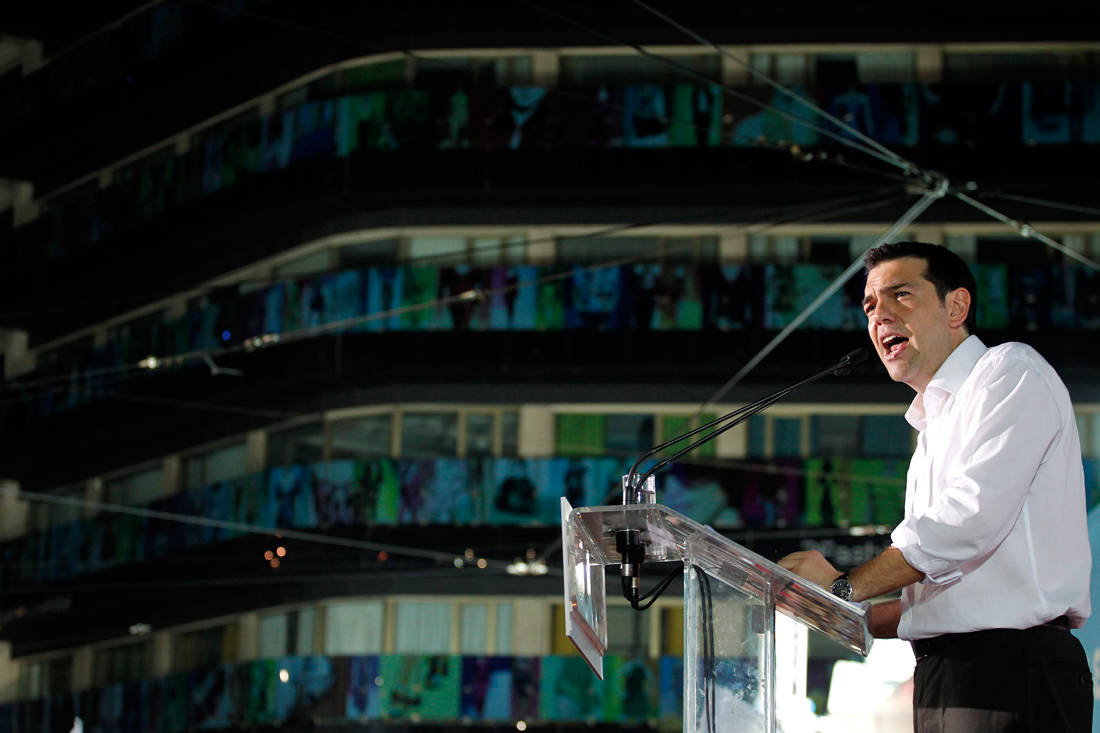
In 2012, the party also joined the historic Union of the Democratic Center (EDIK), a moderate post-government party that brought together in 1976 the Union of the Center-New Forces of Georgios Mavros (evolution of George Papandreou's party) with the Democratic Union of Ioannis Z.
In the same year, both the Riga Citizens' Association and the center-left United Front, formerly known as the United Movement, joined the body of Panagiotis Kouroumblis, which was founded after his removal from PASOK.
A year earlier, the New Fighter-Network of Left Socialists became a member of SYRIZA, a center-left collective that was cut off from PASOK in 2011 and joined SYRIZA.
Who stayed, who left, who came
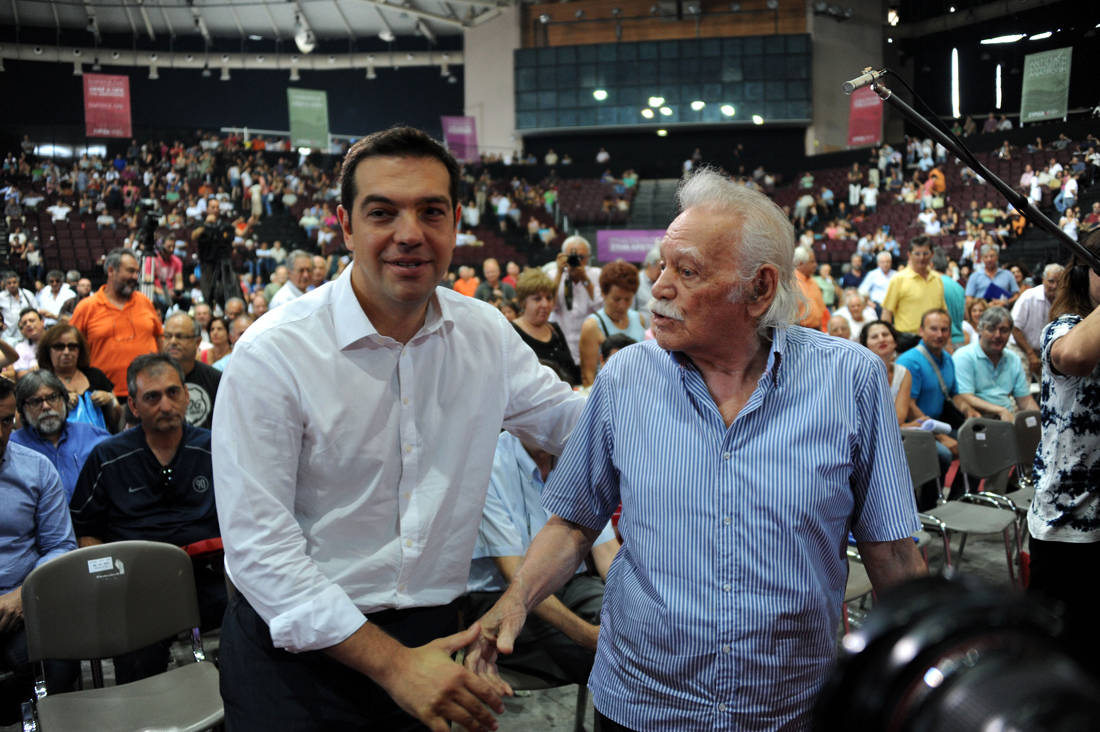
As a mosaic of left-wing actors, social movements and ecological figures, SYRIZA also housed dissident leftists, part of its anti-memorandum front. PASOK, independent collaborating citizens and anti-racist collectives.
Several even larger or smaller organizations have cooperated with SYRIZA in the elections, such as LEFKO (People's Associations of Cross-Party Social Groups) and EAM (Workers' Anti-Imperialist Front), without being members. Ή the organization META (Fighting Workers' Class Overthrow), with which SYRIZA participated in the GSEE.
At the end of 2004, at the 4th Congress of the Coalition, where Alekos Alavanos became president, it seemed that many favored the solution of SYRIZA as a new and diverse political platform. As SYRIZA, the formation came down in the local elections of 2006, the national elections of 2007 and the European elections of 2009.
In the pre-election period of that year, in view of the 2009 national elections, Alavanos stepped down to bring Alexis Tsipras to the forefront as the leader of the election campaign, after he was elected Coalition President at the party's 5th Congress.
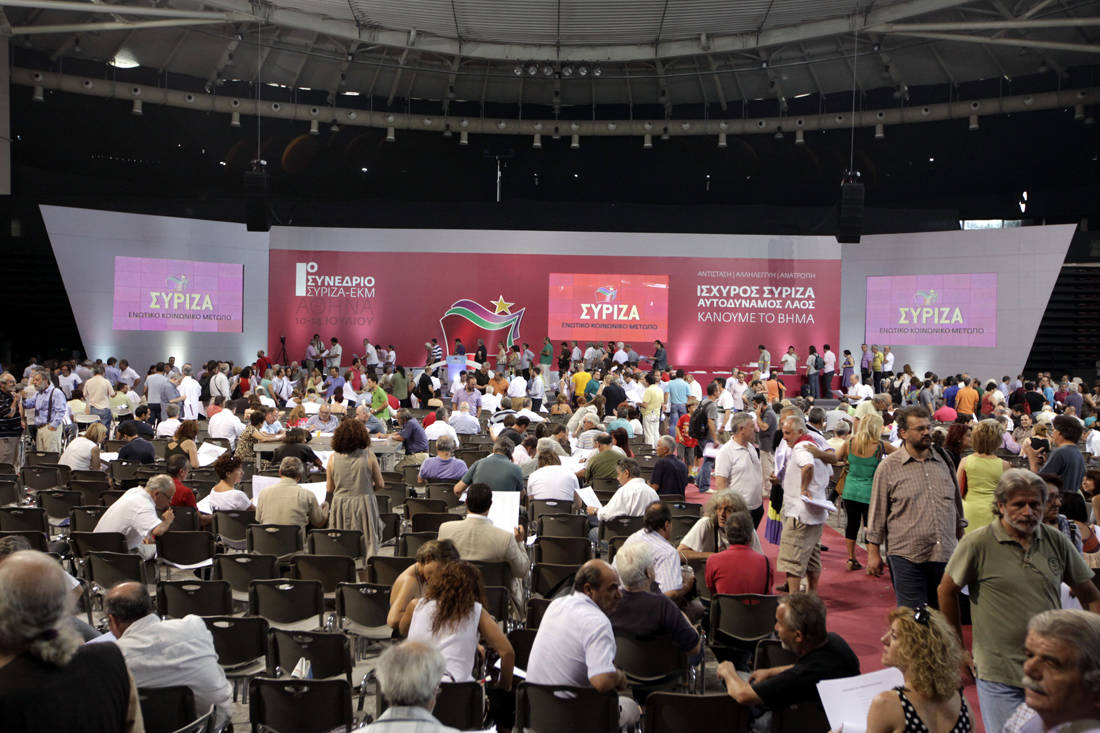
Crucial here for the course of the body towards its unification was the departure of the so-called "Renewal Wing" of Fotis Kouvelis in June 2010, which found its home in a new body called the Democratic Left (DIMAR).
For the first time in its history, SYRIZA came down as a unified group in the national teams of June 2012. There were no more internal groups, despite a single political formation with a common statute and positions, despite the pluralism of the voices of the components. As a party now and not as a coalition of parties, it is emerging in the position of the official opposition, further increasing its percentages since the May elections.
SYRIZA of the components withdrew for the sake of SYRIZA of the members in July 2013, at the 1st Founding Conference of SYRIZA EKM. The political decision of the congress confirmed the intentions: "SYRIZA is founded as a single, massive, democratic, multi-party party of the modern Left to strengthen an already strong, popular current of overthrow."
There the delegates were asked to answer a crucial question: whether they would evolve into a single party or remain a loose union of diverse voices. It was the decision that sealed the political face of SYRIZA, a question that was asked for the first time at the Panhellenic Conference of SYRIZA EKM in November last year.
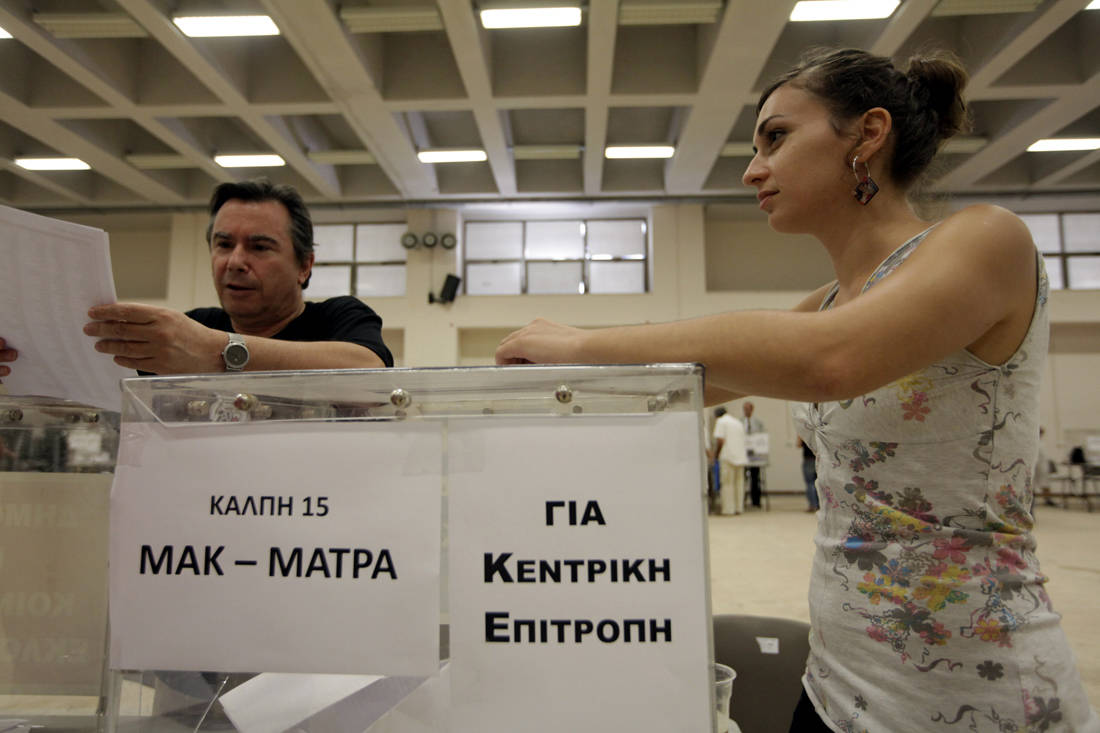
The proposal for the self-dissolution of the party was taken by an overwhelming majority by the Central Committee of the Coalition, which remained the main blood donor of SYRIZA in vital potential and electoral rum. The members of SYRIZA were no longer components, but natural persons.
The self-dissolution of the components for the sake of the united SYRIZA was not bloodless. The Red, say, split under the weight of the historic decision. The Communist Organization of Greece (KOE), on the other hand, suspended its independent public presence as "a necessary step in strengthening SYRIZA and its united expression."
The birth of the united SYRIZA was also welcomed by the United Front, emphasizing that "the immediate unification of the views and the organizational structure of the SYRIZA EKM is imperative".
The Active Citizens, the CMP and the KEDA said "No" to the controversial issue of self-dissolution of the components, insisting on maintaining the form of the allied form and considering that the debate on the components obscures the political dispute. "No" said DIKKI in the evolution of SYRIZA into a single party, as well as EDIK, calling instead for an alliance of the forces of the Center with the Left and not for unification.

The united SYRIZA prevailed in defiance of the "dissident" components and Alexis Tsipras became president with a resounding percentage close to 75%. The founding conference split to unite and made many leave to stay with those who agreed.
The Renewal Communist Ecological Left (AKOA), for example, was one of the components that dissolved itself in 2013 to give birth to the united SYRIZA. Something that the United Front did, among other components.
The new SYRIZA, of course, again sought broader alliances within the Left. In 2014 he collaborated with the center-left Social Pact, the party founded in 2012 by Louka Katseli and Harris Kastanidis after their removal from PASOK.
SYRIZA forged consensus with many others, such as the Movement of Ideas and Action PRATTO by Nikos Kotzias, a political platform founded in 2012, the Left Perspective, a body formed by former members of the Democratic Left, and the Society First, a polytheistic which sprang from former members of the Independent Democratic Deputies (ADIB) mainly.
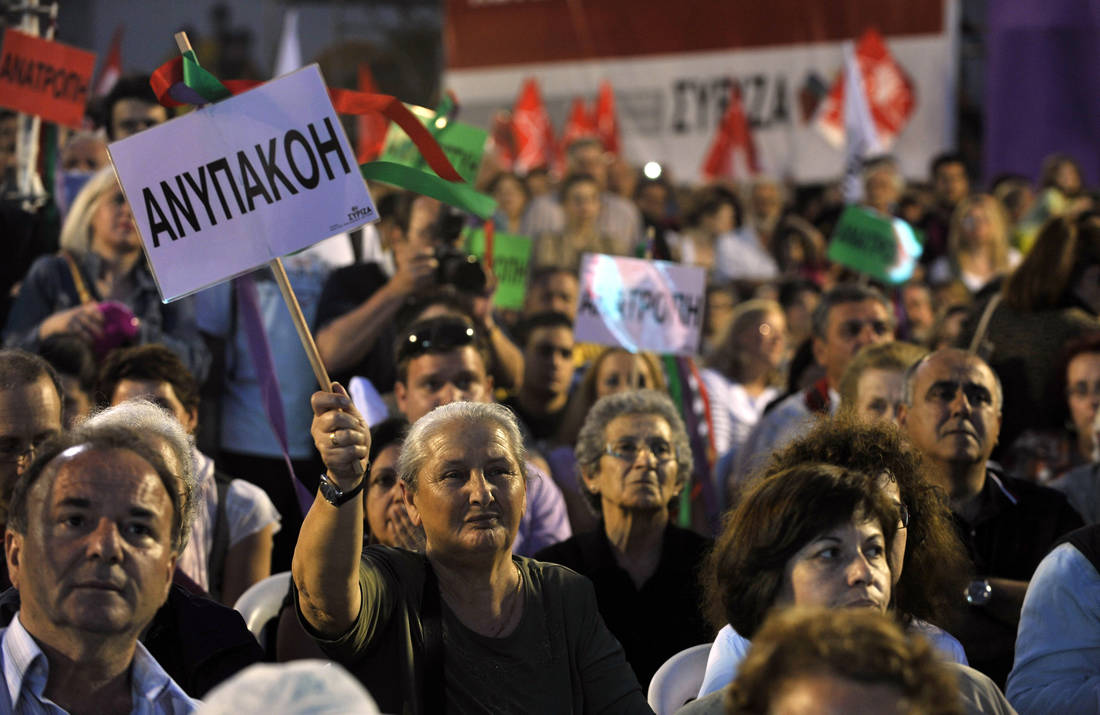
His collaboration with the Green Ecologists in 2015 was also important, a year that would drastically change the political map of SYRIZA. The 2015 departures took the form of an avalanche, with former members and current members denouncing the Tsipras government's policy and the conclusion of the third support program, as the party had meanwhile come to power as the "first time Left".
In the announcement of the second elections of 2015 for that September, the components that had self-dissolved supposedly showed their teeth again, leaving en masse. The separatist event would be known as the "split of August", as SYRIZA changed its identity and political physiognomy.
The day after the announcement of the September elections, government MPs and front-line officials left SYRIZA and most of them gathered around the Lafazanis Popular Unity, absorbing Lafazanis' Left Current Stratouli, of Chountis etc. The Left Platform as a whole left the multi-party SYRIZA, as well as dozens of members of the party's Central Committee. And they were not alone.

The CMP left SYRIZA and joined its Eurosceptics LAE (with whom, however, a good part of it disagreed in 2018 and became independent), as well as the Active Citizens and the New Fighter, who also joined the Popular Unity, something that the KOE, EDIK (which had not dissolved in 2013) did and DIKKI, which also remained a self-existing party in 2013 and after the vote of the support mechanism by SYRIZA, cut all ties and joined LAE. Xekinima left the cooperative ship early, as early as 2011.
The transformation of SYRIZA did not stop in 2015, although now the game is played within the single party, which is dominated by three distinct currents: the "tsiprikos" of the so-called United Trend, the members of the Platform (the executives of the Renewal Wing who do not participated in the split of 2010 and the birth of DIMAR) and the descendants of the Socialist Tendency.
Who often flirt intensely with each other trying to bridge the differences and form a strong and majority pole inside Koumoundourou. With DIMAR back in the chariot, as the two parties announced in April 2019 their program agreement for cooperation!
Today, the three tendencies of SYRIZA seem unified and united around the leader. What will happen to SYRIZA after July 7 elections, a party that hosts social democrats, Marxists, Maoists, Trotskyists, Eurosceptics, Eurocommunists, left-wing patriots, anti-capitalists, environmentalists, etc., will be seen very soon…
